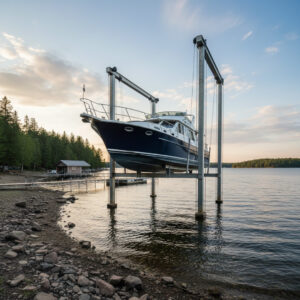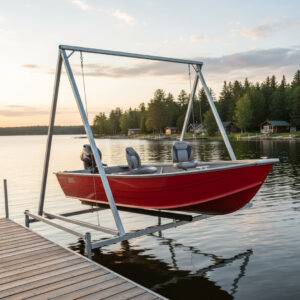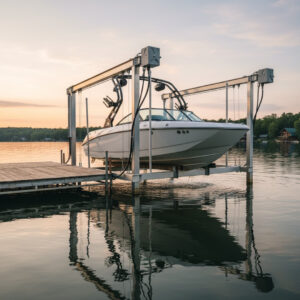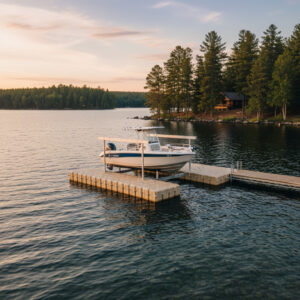What is Boat Lift Capacity? A Complete Guide for Boat Owners
When choosing the right boat lift for your dock, understanding boat lift capacity is essential. This key specification determines how much weight your lift can safely handle from small fishing boats to large yachts. Selecting the correct capacity not only protects your investment but ensures smoother operation, longer equipment life, and greater peace of mind.
Whether you’re lifting 2,000-lb. runabout or a 20,000-lb. cruiser, knowing your boat lift capacity helps you make a smarter, safer purchase.
What Boat Lift Capacity Means
Boat lift capacity is the maximum weight a lift can raise and support without strain or failure. Every lift system from manual lifts to hydraulic models is engineered with a rated capacity (e.g., 3,000 lbs., 6,000 lbs., 10,000 lbs., etc.).
This rating includes:
- The boat’s dry weight (as listed by the manufacturer)
- Fuel and water weight
- Gear, accessories, and passengers
- A recommended safety margin of 10–20%
Exceeding that limit can result in uneven lifting, cable stress, or motor failure. That’s why knowing your total loaded weight is critical before choosing a lift.
Typical Boat Lift Capacity Ranges
Boat lifts are built to accommodate a wide range of boat sizes and environments. Here’s a quick guide to common boat lift capacity ranges and their best uses:
- 1,500–4,000 lbs.: Ideal for jet skis, inflatables, and small fishing boats
- 4,000–7,000 lbs.: Designed for deck boats, center consoles, and mid-size runabouts
- 8,000–15,000 lbs.: Suited for pontoons, cabin cruisers, and small yachts
- 20,000+ lbs.: Engineered for large yachts and offshore vessels
Many manufacturers offer custom configurations to match vessel types, dock conditions, and environmental factors, ensuring every lift is optimized for capacity, safety, and ease of use.
How to Determine the Right Capacity
To find the ideal boat lift capacity, calculate your boat’s total loaded weight using this formula:
Total Lift Capacity = Dry Weight + Fuel Weight + Water Weight + Gear + 10–20% Margin
Example:
If your boat’s dry weight is 3,500 lbs., plus 300 lbs. of fuel, 200 lbs. of gear, and a 15% margin, you’ll need a lift rated at least 4,500–5,000 lbs.
When purchasing a new lift, always double-check these numbers with your boat dealer or lift manufacturer. A professional can help ensure your system is matched precisely to your vessel’s specs and local conditions.
Boat Lift Types and Features
Boat lifts vary by design and purpose, but capacity remains central to performance. Common lift types include:
- Vertical Lifts: Perfect for fluctuating water levels and heavier boats.

- Cantilever Lifts: Simple, cost-effective design for smaller boats.

- Hydraulic Lifts: Fast, quiet, and ideal for frequent boaters seeking convenience.

- Floating Lifts: Great for deep or uneven water, with easy installation.

Quality lifts are typically made from marine-grade aluminum with stainless-steel cables, sealed motors, and anti-corrosion finishes, ensuring long-lasting durability and smooth operation even in saltwater environments.
Why Boat Lift Capacity Impacts Performance
A properly rated boat lift capacity ensures:
- Smooth operation under load
- Reduced wear on motors and cables
- Improved balance during lifting and lowering
- Enhanced safety for both boat and dockside users
Using an undersized lift can lead to instability and long-term mechanical failure. Investing in a lift with the correct capacity or slightly above your current need provides the best protection for your boat and dock setup.
Conclusion
Understanding boat lift capacity is the key to selecting a lift that’s both safe and efficient. By accurately calculating your vessel’s total loaded weight and choosing a system designed to handle that load, you’ll enjoy reliable performance and longer equipment life.
For durable, high-performance lifts built to handle every capacity class, Dockstop offers premium boat lift solutions tailored to your vessel’s needs. With Dockstop, you get trusted engineering, quality materials, and expert support ensuring your boat stays protected season after season.
